


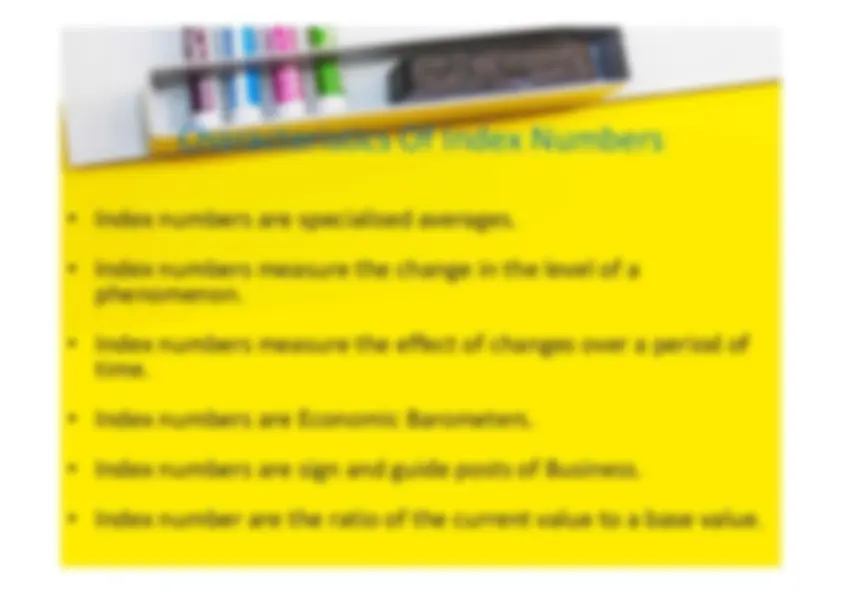


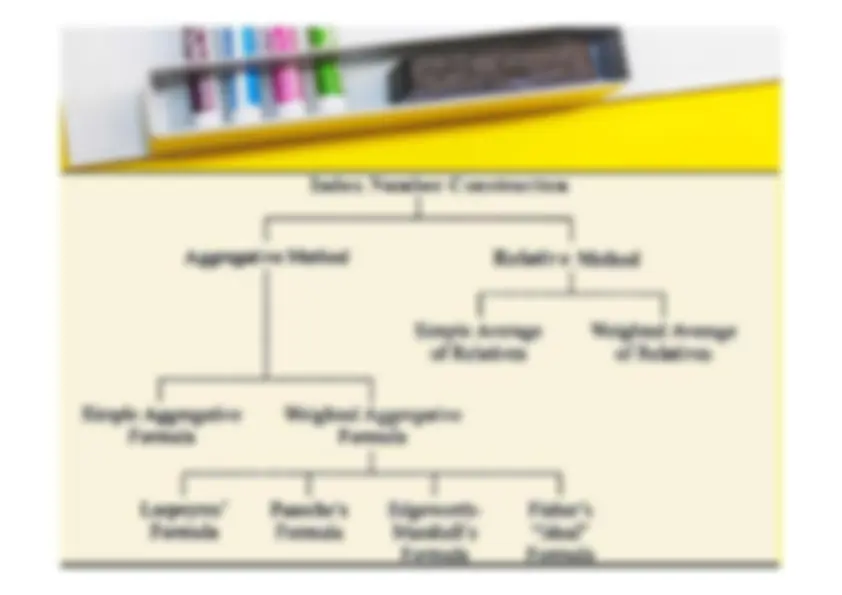




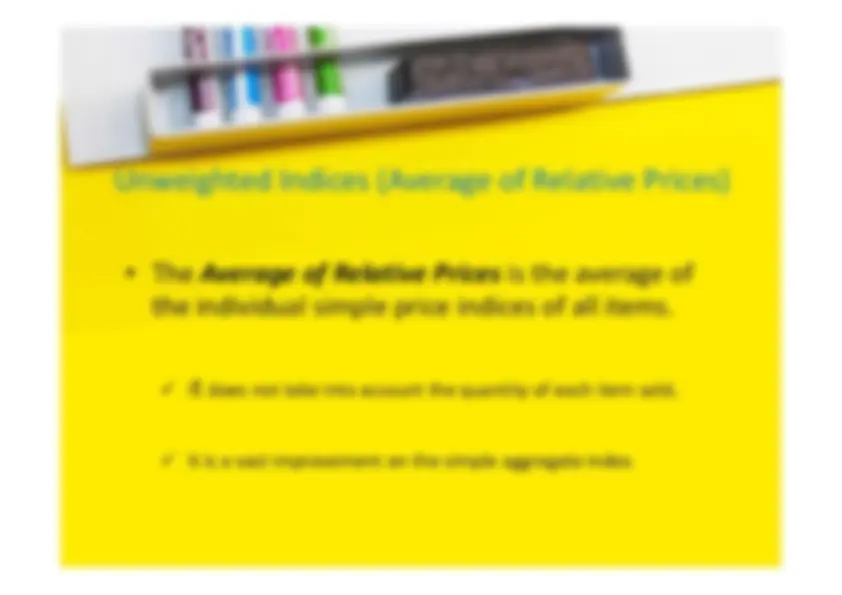
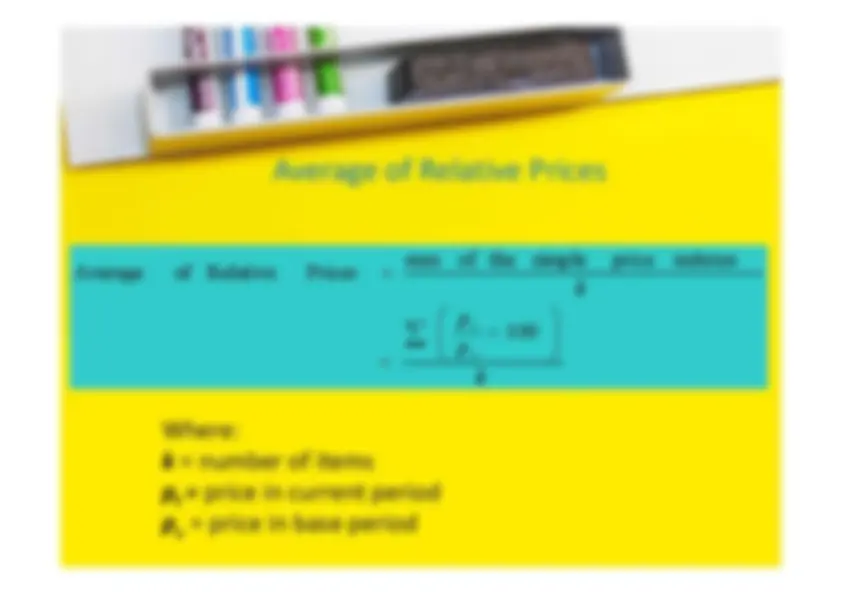
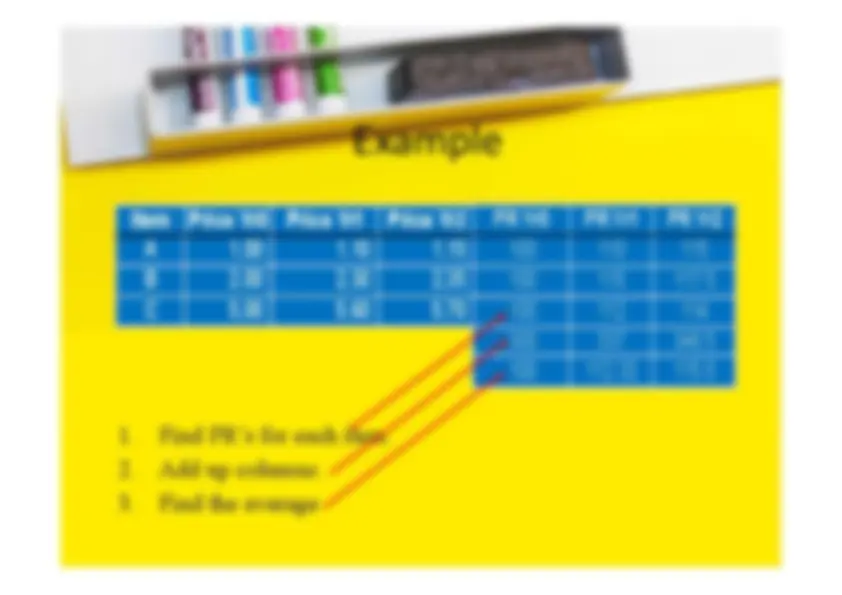
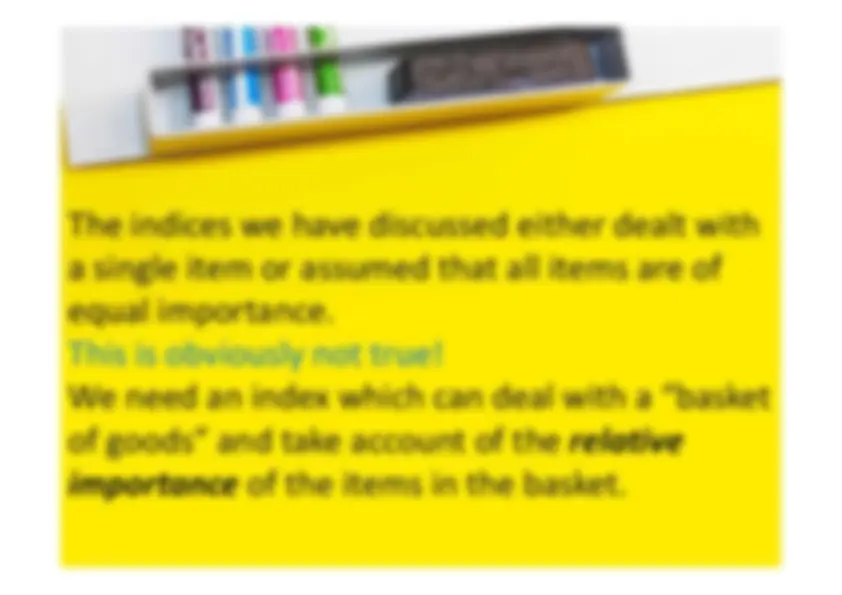


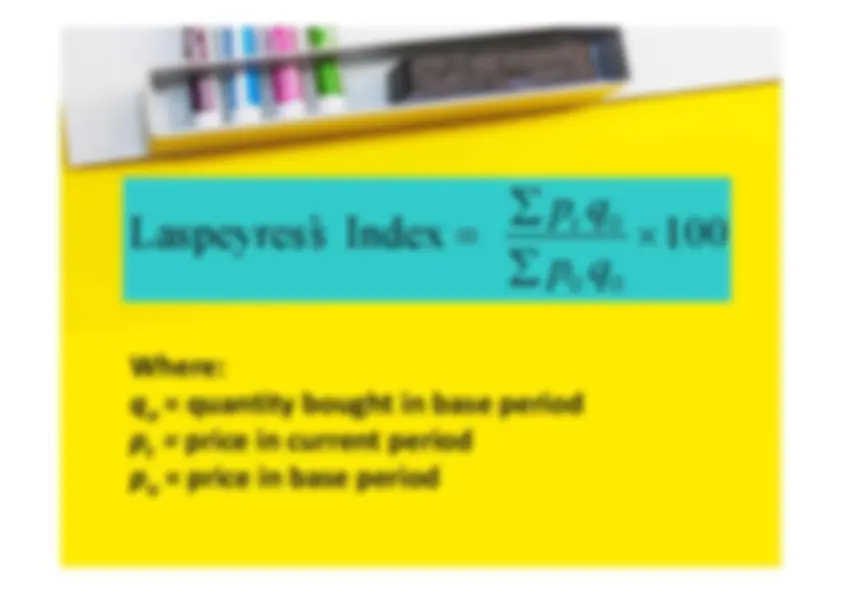
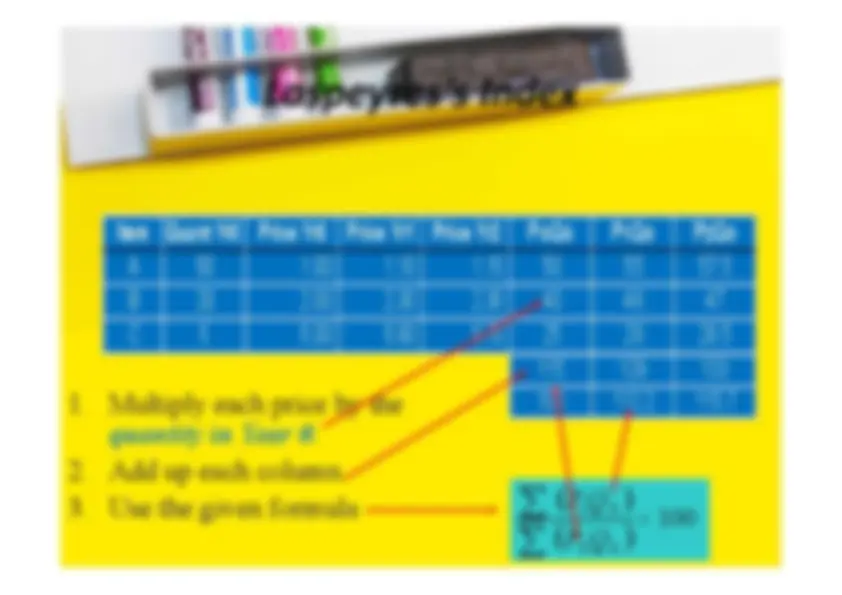


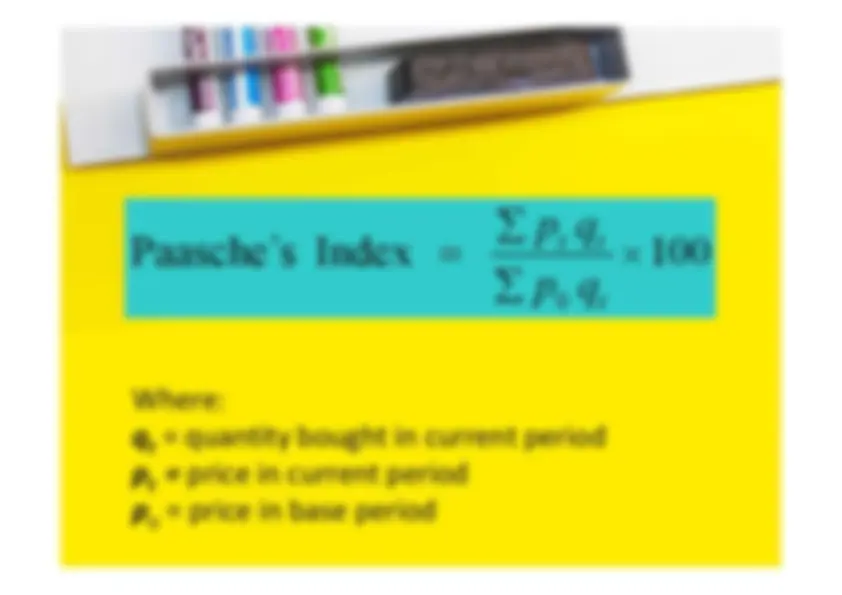
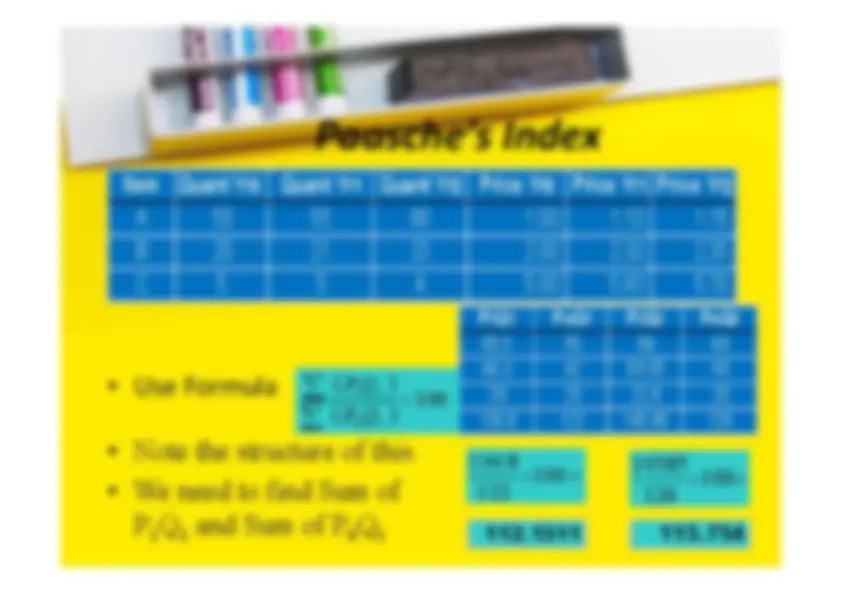



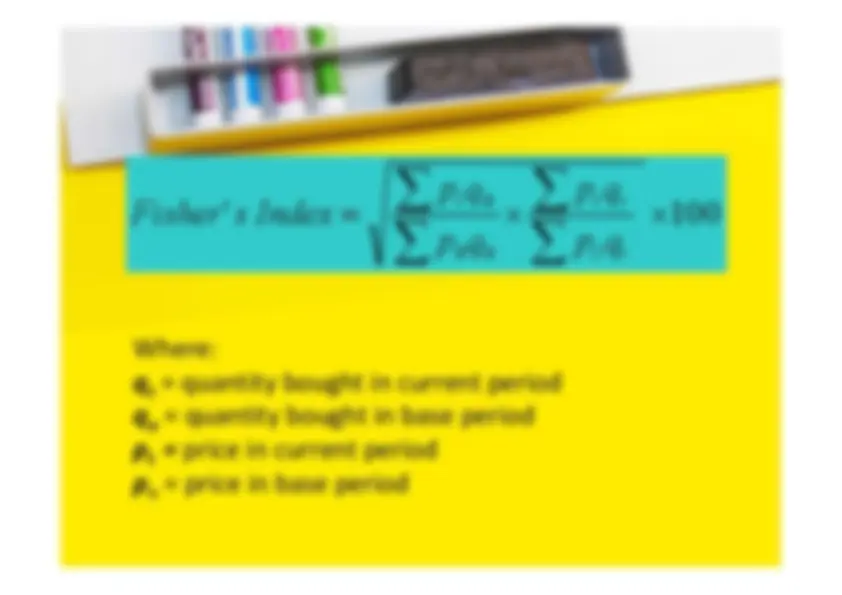





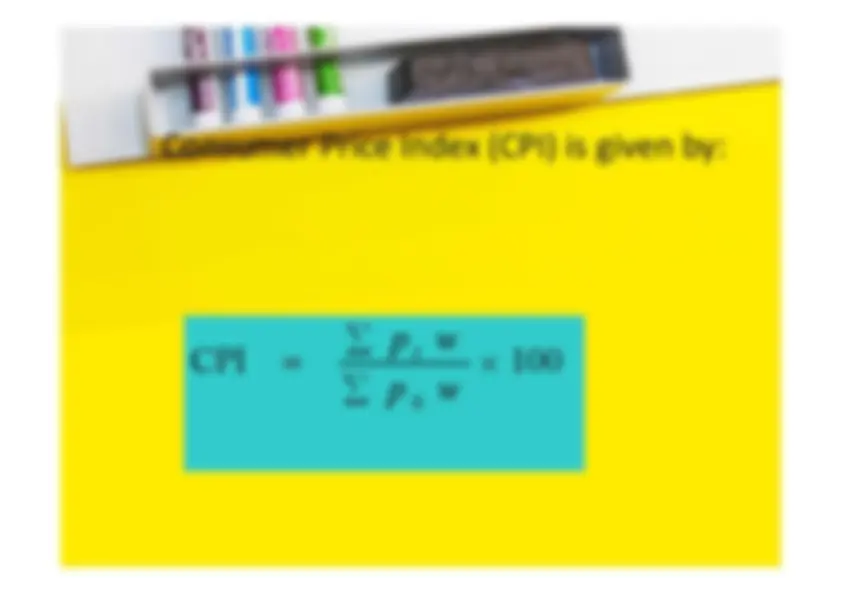
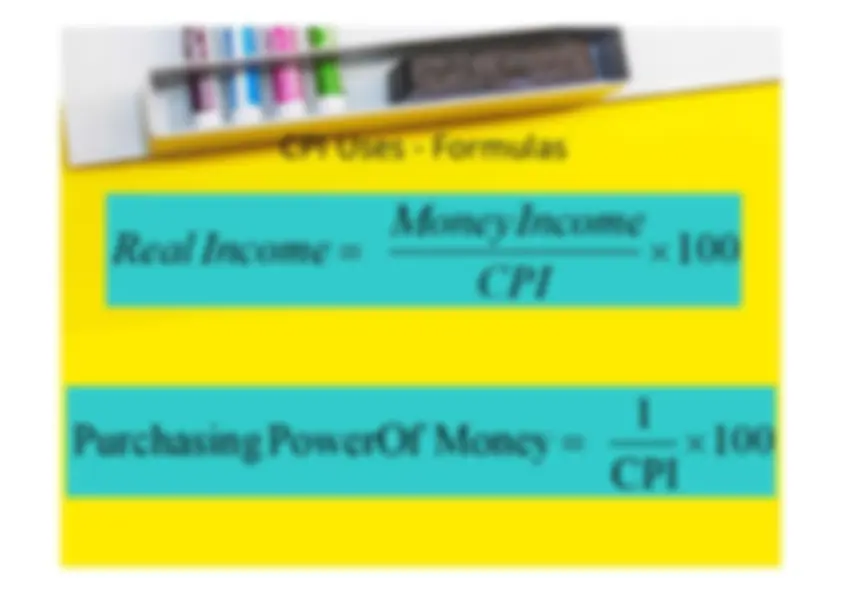





Study with the several resources on Docsity

Earn points by helping other students or get them with a premium plan


Prepare for your exams
Study with the several resources on Docsity

Earn points to download
Earn points by helping other students or get them with a premium plan
Community
Ask the community for help and clear up your study doubts
Discover the best universities in your country according to Docsity users
Free resources
Download our free guides on studying techniques, anxiety management strategies, and thesis advice from Docsity tutors
An in-depth explanation of index numbers, their definitions, characteristics, types, and applications. Index numbers are statistical values used to measure changes in prices, quantities, or other economic phenomena over time or place. They are essential economic barometers and signposts for businesses. the concept of index numbers, their characteristics, the reasons for converting data to indices, and the different types of index numbers, including price indices and quantity indices.
Typology: Study notes
1 / 44

This page cannot be seen from the preview
Don't miss anything!





































STaTiSTicS DeparTmenT n.a.S. college, meeruT
Index Numbers
Definition
Characteristics Of Index Numbers
Why Convert Data to Indices?
Price Index Price Relative :- The price relative of an item is defined as: Where: p t = price in current period p o = price in base period Price Relative Index provides a ratio that indicates the change in price of an item from one period to another. o t p p Price Relative
Simple Price Index
Suppose we have the price of an item for each year over a four year period:
Unweighted indices Simple Aggregate Price Index :- In most cases we are interested in the prices of a “basket of goods”, and not just one item. We therefore need an aggregate index.
Unweighted Indices (Average of Relative Prices)
Average of Relative Prices Where: k = number of items p t = price in current period p o = price in base period k p p k o t (^) 100 sum of the simple price indexes Average of Relative Prices